Are you a Quiet Speculation member?
If not, now is a perfect time to join up! Our powerful tools, breaking-news analysis, and exclusive Discord channel will make sure you stay up to date and ahead of the curve.
I've been singing Modern's praises for, well, ever. At one time, I thought I was either the format's single biggest proponent or just some kind of insane zealot. But as time goes on and Modern steadily grows in popularity, articles like PVDDR's "The Problem with Modern" start looking hopelessly dated, and are met with a rising tide of affirming format-explainers like Jadine Klomparen's "How I Learned to Stop Worrying and Love Modern."
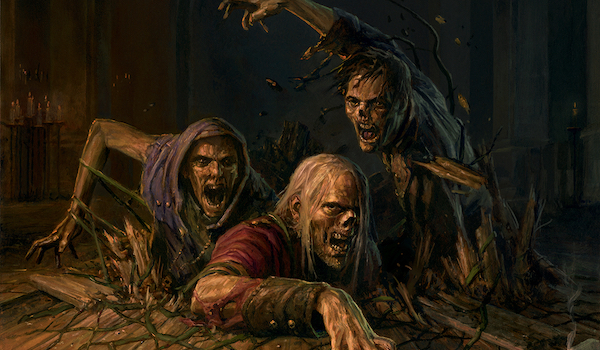
While singing those praises of mine, I've written from a theoretical standpoint about many format features I enjoy. Not in a while, though, have I engaged with my love of Modern on a more personal level. In Magic, I like combat, and I like interacting. So naturally, aggressive decks with disruptive elements tend to end up my favorites. Today's article covers the three decks I'm currently on that allow me to get all I need out of the format, each boasting its own unique style (and set of spells, besides lone repeat Tarmogoyf) without escaping the aggro-control macro-archetype.
Thresh: A Quick Clock and some "No"
Thresh is a spell-based tempo archetype that rides a few fast, efficient threats to victory by supplementing them with ample reactive disruption. The strategy never gained much traction in Modern, a format historically dominated by the rock decks that tend to hassle thresh; it's far more celebrated in Legacy. Still, as BGx Rock loses shares to focused aggro decks like Shadow and Humans, thresh becomes more appealing here.
I used to get my thresh kicks on Temur Delver, a deck I came to be known for. But I've held since the Gitaxian Probe banning that Counter-Cat is where thresh players want to be in Modern.
Counter-Cat, by Jordan Boisvert
Counter-Cat seeks to set up a board advantage (a feat often as simple as playing a turn one Wild Nacatl) and then maintain it until the opponent loses through combat. So if opponents start ahead, Counter-Cat plays the midrange game to claw back ahead on the board; otherwise, it sits on permission spells to get in free attacks, and dumps its hand of stockpiled threats when it runs out. The deck's robust sideboard allows it to seamlessly transition into a removal-heavy midrange deck, a creature-heavy aggro deck, or a permission-heavy tempo deck as needed.
Further reading:
- Delver, with Teeth: Introducing Counter-Cat
- Delver, on a Bulk: Counter-Cat in Practice
- Scratching the Itch: Returning to Counter-Cat
- Chart Toppers: Counter-Cat after Ixalan
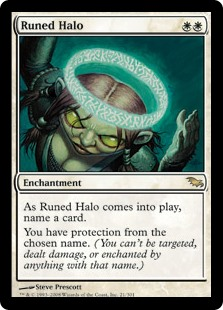 Strengths & Weaknesses
Strengths & Weaknesses
The deck's transformative sideboard abilities give it game against a large portion of the field, but a couple strategies or key cards line up so well against us that we're dogs to them no matter what. Those cards are Knight of the Reliquary, Drowner of Hope, and Runed Halo. Counter-Cat's toughest matchups are UW Control, Bant Eldrazi, Mardu Reveler.
On the bright side, threat-light aggro decks (Burn; Affinity; Infect), synergy-dependant aggro decks (Merfolk; Slivers; Spirits), and uninteractive combo decks (Counters Company; Storm; Valakut) are all a breeze to beat. Three-color midrange decks and Eldrazi decks besides Bant find themselves in the middle.
What's New
Not much has changed since the last version of Counter-Cat I posted here, but I have switched out the second Ancient Grudge for another Engineered Explosives in the side. Explosives is in a great spot for a deck like this one, since it deals with the pesky three-drops we hate---and that are now on the rise. I made the swap a couple weeks ago as a concession to Humans.
Stompy: Lock You Out, Beat You Down
Stompy decks are relative newcomers to Modern, first bursting onto the scene at Pro Tour Oath of the Gatewatch in Colorless Eldrazi Stompy and sticking around to some degree in Skred and Eldrazi Tron. The archetype wants to slam lock pieces and follow up with big threats, killing opponents before they can draw out of the lock.
Both as a Blood Moon aficionado generally and as a person who's always wanted Chalice of the Void to succeed in Modern, I'm a big fan of the strategy. As soon as the "little" Eldrazi creatures were spoiled, I got to work on various stompy shells, and still play the one that dominated the Pro Tour.
Colorless Eldrazi Stompy, by Jordan Boisvert
Colorless Eldrazi Stompy leverages Serum Powder and Gemstone Caverns, each propped up by Eternal Scourge, to aggressively mulligan into hands that operate at a speed opponents can't compete with. Any five-to-seven-card hand without a "free win" dimension is usually sent back. Those dimensions include turn one Chalice of the Void (against Serum Visions decks and aggro-combo), Eternal Scourge (against removal-heavy midrange decks), and, of course, Eldrazi Temple.
Further reading:
- Eternal Devotion: Rebuilding Colorless Eldrazi Stompy
- Crunch Time: Three Months Later with Colorless Eldrazi Stompy
- Seeing the Light: Top 4 at Regionals with Colorless Eldrazi Stompy
- Contorting the Competition: SCG Invitational Report
Strengths & Weaknesses
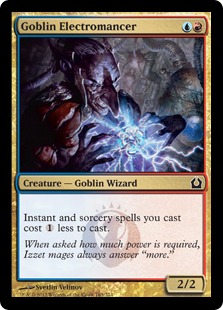 It makes the most sense to discuss this deck's strengths and weaknesses relative to those of its natural foil, Eldrazi Tron. Stompy is definitely unfavored in that pseudo-mirror, as well as weaker to value-based Company decks. But it gains points elsewhere: our Affinity, Storm, and Ad Nauseam matchups are quite good, for instance, as are our creature combo matchups. Gx Tron is also a cinch for Stompy thanks to Eldrazi Mimic and our faster Chalices. I also prefer our odds against Shadow, since in addition to Chalice of the Void, we pack a full set of Relic and the frustrating Scourge package.
It makes the most sense to discuss this deck's strengths and weaknesses relative to those of its natural foil, Eldrazi Tron. Stompy is definitely unfavored in that pseudo-mirror, as well as weaker to value-based Company decks. But it gains points elsewhere: our Affinity, Storm, and Ad Nauseam matchups are quite good, for instance, as are our creature combo matchups. Gx Tron is also a cinch for Stompy thanks to Eldrazi Mimic and our faster Chalices. I also prefer our odds against Shadow, since in addition to Chalice of the Void, we pack a full set of Relic and the frustrating Scourge package.
Differences aside, Stompy obviously has many similarities with Eldrazi Tron. Like that deck, we're practically invulnerable to Blood Moon, and can steal plenty of games with Chalice or Thought-Knot. We're also helpless in the face of Valakut, the Molten Pinnacle without a quick start.
What's New
For starters, the flex spot split in the main now consists of 2 Matter Reshaper, 2 Endless One, and 1 Smuggler's Copter. Reshaper's stock falls as the format becomes unintractive, and without so much Fatal Push anymore, I like cutting two for Endless Ones. Copter is a fantastic smoother in this deck that lets us attack from a different dimension with flying, but was also unplayable with Push running rampant.
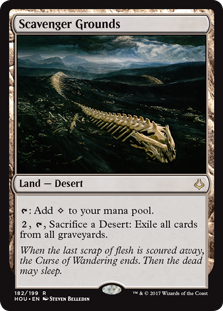 Gone too are Urborg, Tomb of Yawgmoth and the third Sea Gate Wreckage, those lands replaced by Scavenger Grounds. Grounds does give us incidental graveyard hate for Storm and friends in game 1, but more importantly lets us slam Eternal Scourges guilt-free into counterspells and other 3/3s alike, knowing we can rebuy them all later. The addition greatly improves our midrange matchups pre-board, a crucial adjustment now that they've adapted to fight our cousin, Eldrazi Tron. Sea Gate is a great mana sink in the late-game, but if we're adding Grounds, I'm comfortable cutting one. Between the six manlands, 2 Grounds, and 2 Wreckage, I think we've got plenty to do with our mana---especially since Grounds also lets us re-cast deceased Scourges. As for Urborg, I liked the land most of the time, but it proved a bit unreliable at one copy. We're back to running Copter now, giving us another use for those uncastable Dismembers in the late-game and making Urborg more superfluous.
Gone too are Urborg, Tomb of Yawgmoth and the third Sea Gate Wreckage, those lands replaced by Scavenger Grounds. Grounds does give us incidental graveyard hate for Storm and friends in game 1, but more importantly lets us slam Eternal Scourges guilt-free into counterspells and other 3/3s alike, knowing we can rebuy them all later. The addition greatly improves our midrange matchups pre-board, a crucial adjustment now that they've adapted to fight our cousin, Eldrazi Tron. Sea Gate is a great mana sink in the late-game, but if we're adding Grounds, I'm comfortable cutting one. Between the six manlands, 2 Grounds, and 2 Wreckage, I think we've got plenty to do with our mana---especially since Grounds also lets us re-cast deceased Scourges. As for Urborg, I liked the land most of the time, but it proved a bit unreliable at one copy. We're back to running Copter now, giving us another use for those uncastable Dismembers in the late-game and making Urborg more superfluous.
The sideboard also gets an update. Excited as I was for Sorcerous Spyglass in this deck, things just didn't work out; most Pithing Needle matchups didn't require a Chalice on 1 anyway, and would often have me board out the Guides. Needle truly shines as a reactive answer to manlands and planeswalkers, and as a proactive answer to combo pieces and Cranial Plating. Its cheaper cost is vastly preferable to Spyglass's information in these cases. Grafdigger's Cage and All is Dust are concessions to value Company decks, the latter also helping against anyone going wide who can beat a few Spatial Contortions (i.e. Humans). Gut Shot still an auto-include because sometimes your opponent's at 1 life and you draw it.
Rock: Strip, Strip, Strip; Now, Kill This!
Rock is a spell-based midrange archetype that uses cheap, proactive disruption to pave the way for its powerful threats. Thresh is synonymous with Legacy as rock is with Modern: no matter how the format shifts, many players will always associate the format with discard spell into Tarmogoyf. Historically, gatekeepers Jund and Abzan have held the keys to Club Rock; Death's Shadow, though, with its decent big mana matchups, changed that by diversifying the archetype.
The low curve inherent to Shadow decks is what drew me to rock for the first time, and lately I've been learning to love targeted discard with the little guy's help in Tarmogoyf colors.
Delirium Shadow, by Jordan Boisvert
The natural evolution of Death's Shadow Jund, Delirium Shadow preserves that deck's Traverse the Ulvenwald-centered core while splashing blue or white for Stubborn Denial or Lingering Souls, respectively---and often both.
Strengths & Weaknesses
After a period of metagame consolidation around Eldrazi Tron, Grixis Shadow, and Storm, Modern is fanning out again, and at a massive scale. Narrow hosers like Rest in Peace lose value in these scenarios, as evidenced by the success of graveyard-independant decks such as Humans. Modern today is a far cry from the Modern of two months ago, when everyone and their moms brought a box full of Nihil Spellbomb to each event. Thus, the stage is set for Delirium to again usurp Grixis and other delve-based versions as top Shadow deck.
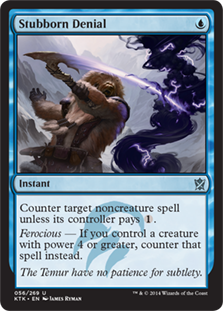 By many measures, Delirium is a better deck; it's certainly more proactive and consistent, which helps immensely in an open metagame. Another thing Delirium has going for it: its flexibility. The deck can be built any which way; foregoing a splash or Temur Battle Rage, dipping into more exotic card types, and splitting up the planeswalker suite are all options for potential pilots. As with Counter-Cat, plenty of colors yield plenty of options.
By many measures, Delirium is a better deck; it's certainly more proactive and consistent, which helps immensely in an open metagame. Another thing Delirium has going for it: its flexibility. The deck can be built any which way; foregoing a splash or Temur Battle Rage, dipping into more exotic card types, and splitting up the planeswalker suite are all options for potential pilots. As with Counter-Cat, plenty of colors yield plenty of options.
As mentioned, Delirium is softer to graveyard hate and to Fatal Push than Delve Shadow, although both of those things are on the downswing. It also struggles with Shadow's traditional weaknesses: go-wide aggro decks, like Humans and Affinity, and prison strategies featuring pertinent hosers like Blood Moon or Chalice of the Void. Jeskai's recent success is no accident, either; that deck has more removal spells than Shadow has threats, not to mention enough burn to close out the game outside of combat. (For what it's worth, Goyf is as good as ever against Jeskai.)
What's New
I've only messed around with this deck for a month or so, and still have a ton to learn. But a few of my choices might seem a bit wacky. First, I like a Tarfire for the upside with Goyf. Damage-based removal is great in a format that's mostly shifted towards Fatal Push, as it's got more targets; Tireless Tracker, Devoted Druid, and Goblin Rabblemaster all die to the instant. I added Tarfire over the third Denial to hedge against go-wide aggro.
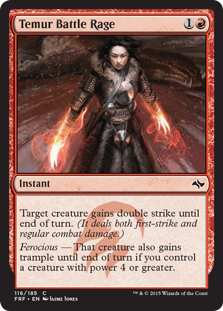 Terminate also shares its spots with Dismember. The Phyrexian instant generates blowouts in this deck since it can act as a double-Mutagenic Growth at any time for our Shadows. It also gives us a big edge against other Shadow decks, especially those with delve threats, and Eldrazi.
Terminate also shares its spots with Dismember. The Phyrexian instant generates blowouts in this deck since it can act as a double-Mutagenic Growth at any time for our Shadows. It also gives us a big edge against other Shadow decks, especially those with delve threats, and Eldrazi.
Lastly, I'm firmly in the Temur Battle Rage camp with this deck. Adding a combo dimension for such a minimal investment allows us to make really stupid attacks even when we don't have the Rage and still force odd blocks. I'm guessing that's the reason some omit it, too; opponents might put us on Rage regardless. But I've been in plenty of situations where the one card I can draw to bail me out of a given situation is Temur Battle Rage, and for that reason, I love packing it. Rage also has the additional benefit of lightening the load on our sideboard and flex spots, since it gives us a compact way to beat cards we otherwise shouldn't, like Lingering Souls or Mirran Crusader. Tarfire and Dismember both improve the card, too, by growing our threats extra stages for double strike.
Thanks Ungiven
So those are the three decks I'm most thankful for this season. Hopefully everyone has a good holiday. And as we inch closer to the new year, remember this lesson from ol' me: always play what you love!




Jordan, why don’t you release a sideboard Guide for counter cat? Seems really good and i want to try it
I’m firmly in the not-believing-in-one-size-fits-all-sideboard-plans camp. But as a rule of thumb, I tend to reserve permission for matchups with a card I absolutely need to stop that I can’t trade for with removal (i.e. Through the Breach; Collected Company). If removal spells trade for the cards I care about (i.e. Kitchen Finks; Siege Rhino), I take out all the permission for removal. And when there’s nothing to remove, the removal spells become permission.
Dynamic midrange matchups generally require attuning to your own playstyle.
5 color shadow has a pretty good Affinity matchup, though game 1 can be awkward sometimes.
I have found it to be fine when Shadow draws its hate cards (Grudge, Return) and otherwise shaky, at best. No Serum Visions complicates getting to those hate cards, too; among them, only Staticaster is searchable, and he comes down too slow to make an impact half the time.
Starting a game behind is particularly rough. Part of the reason I like TBR is that it allows you to cheese some G1’s against Affinity specifically.
Why do you believe that 5c Shadow is more Consistent than Grixis?
Its 8 cantrips cost 0 and not 1, every threat can be cast unconditionally, and it runs a tutor over a card selection spell.
Ok, you convinced me. About the Disruption-Removal mix: Why 8 Discard spells? Seems to me a little bit too much, while i’m thinking (as traditional Rock Midrange player) about cutting 2 Inquisitions for 1 more Push, and 3rd Terminate. With that configuration, a 3rd Liliana of The Veil could be good?
Check out the SCG articles on this deck from around GP Van. The core is very good and those writers go far deeper into its configuration than I will here (not too interested in producing duplicate content!).
I’m taking Colorless Stompy to Oklahoma next week and I’ve been testing like a mad man. I’ve made some changes to your list after nearly a hundred games played, and come away firmly being against Serum Powder. I won’t rail on you for the inclusion, but the top decking of Powder and having to toss relevant cards early has cost me more games than any amount of mulliganning has won. However, I was hoping to pick your brain/give a field report on some cards I’ve been testing and having luck with.
Here’s my list for reference:
//Lands
4 Blinkmoth Nexus
2 Cavern of Souls
4 Eldrazi Temple
3 Gemstone Caverns
4 Ghost Quarter
2 Scavenger Grounds
2 Sea Gate Wreckage
2 Wastes
//Artifacts
4 Chalice of the Void
2 Treasure Map
1 Smuggler’s Copter
//Instants
4 Dismember
//Creatures
4 Eldrazi Mimic
4 Endless One
4 Eternal Scourge
2 Matter Reshaper
4 Reality Smasher
4 Simian Spirit Guide
4 Thought-Knot Seer
//Sideboard
SB: 1 All Is Dust
SB: 1 Gut Shot
SB: 1 Pithing Needle
SB: 3 Ratchet Bomb
SB: 3 Relic of Progenitus
SB: 2 Spatial Contortion
SB: 1 Surgical Extraction
SB: 2 Warping Wail
SB: 1 Grafdigger’s Cage
Hot take time! Treasure Map is bonkers. It was suggested by a friend as a spicy addition, and has over-performed. The filtering, ramp and card draw have made some of our toughest mid-range matchups a little bit better. The only other real deviation from your build is that I’ve shaved the two Mutavaults in favor of another Cavern of Souls. While I miss the Vaults, not having a pivotal Seer/Smasher countered has more than made up for it. To make up for the loss of the manlands, I’ve jammed a full playset of Endless One, and have been extremely happy. They fill gaps in the curve, wall off little critters, smash hard and power up Mimics really well. I’m open to critiques and suggestions, but I’m actually pretty content with the current list. With that said, my biggest issue is the sideboard, and I was hoping to get your opinion on a couple of choices I have to make. I really am not a huge fan of running so much graveyard hate, as 2x Scavenger Grounds + 3x Relics + 1x Surgical + 1x Cage seems like overkill. My debate right now is cutting Cage for something else. I don’t run into as many Company decks as I thought I would (though they’re still out there), and Cage often feels unnecessary with as much gy hate as we pack. Would you rather have a second Needle or a third Contortion? Lastly, what is your take on Warping Wail in the board? My issue is that Scapeshift/anything with Through the Breach is a nightmare and they hedge against it a little bit, but not having the playset makes them less than ideal. Since I can’t recall them in any of your lists, so I’m assuming you’re fine with their exclusion, but I thought I’d ask. Since you’re as close to an expert on Colorless Stompy as it comes, I would greatly appreciate your input. Thanks for your continued exploration of this archetype and your well written content.
Sorry for the overlong post!
Cage is really just for CoCo. It’s incidental graveyard hate. Definitely cut it if you’re not expecting Company. Relic/Scourge package handles most midrange decks IME so you don’t need to go deep into weirder stuff like Treasure Map for those so long as you max out on the engine cards. Remember that grave hate is more than just grave hate in an Eternal Scourge deck—it’s a grinding plan. Relic/Scourge also lets you ignore countermagic which is why I always favor Mutavault over Cavern (Vault invaluable for racing Scapeshift too). I guess without Powder you find Scourge less frequently though so it’s not as reliable.
Prefer Contortion over Needle unless you expect lots of UW. Wail doesn’t stop TTB and we can beat Scapeshift fine without Wail if they don’t get us with the instant. TTB the card is indeed awful for us (only Mimic into TKS with a Temple beats it) but fortunately it’s almost nowhere right now (most current Scape lists omit it because Denial’s so prevalent).
Finally I have found that without Powder this deck becomes too inconsistent and you might as well play Tron lands, but I won’t try to sell you on that one!
No problem for the long post. Good luck at GPOKC and stop by this Friday for some juicy content 😉